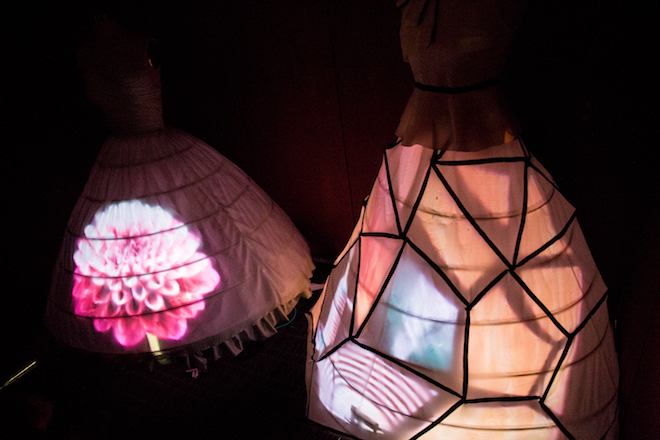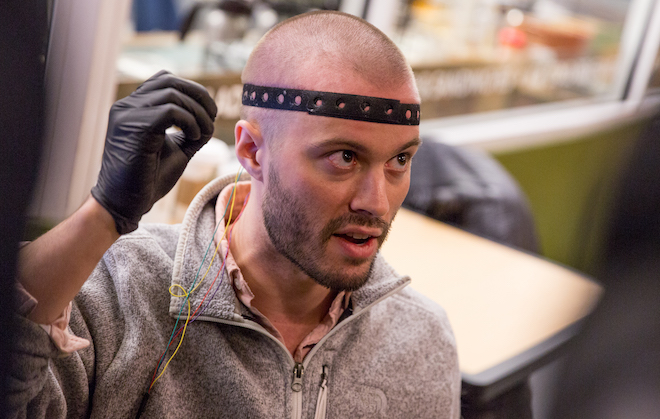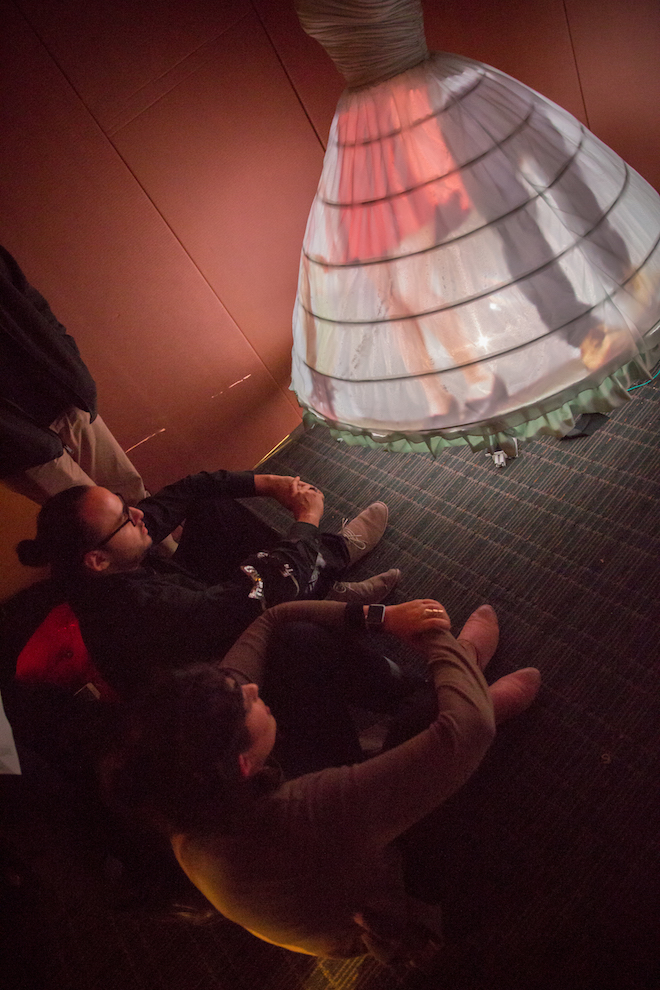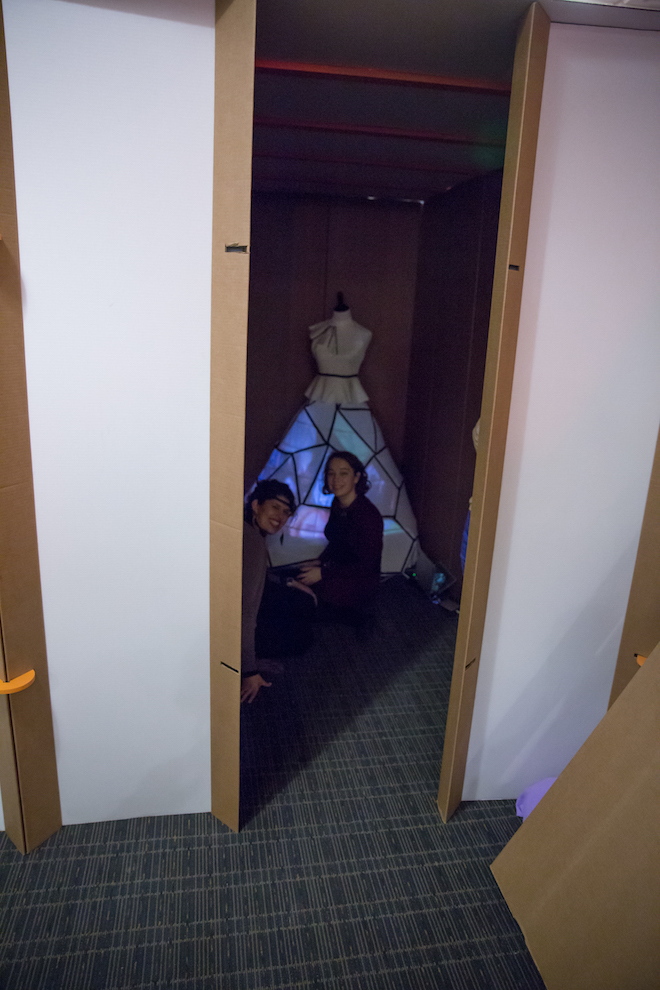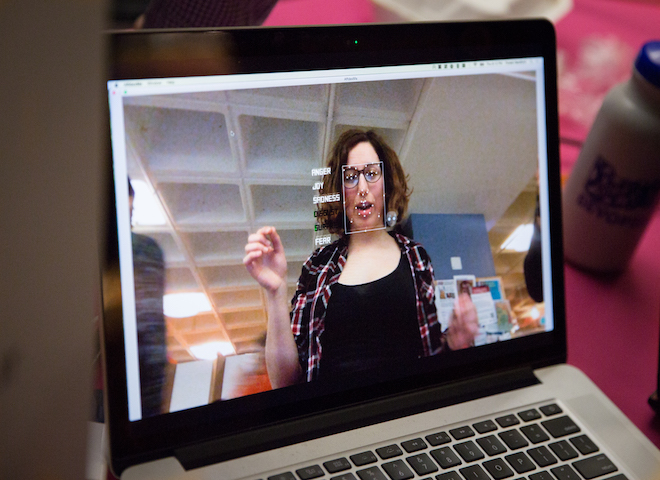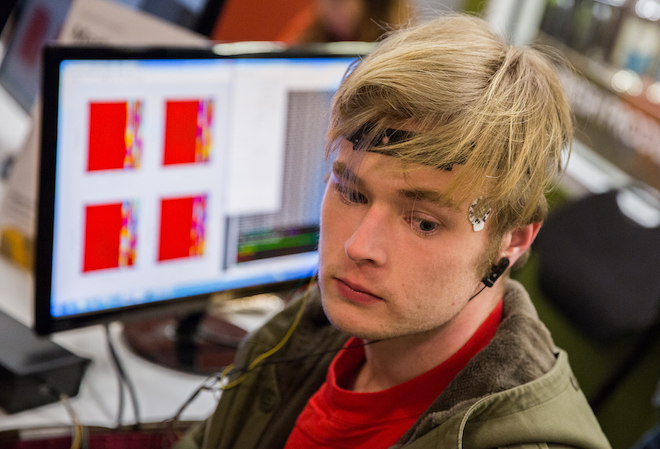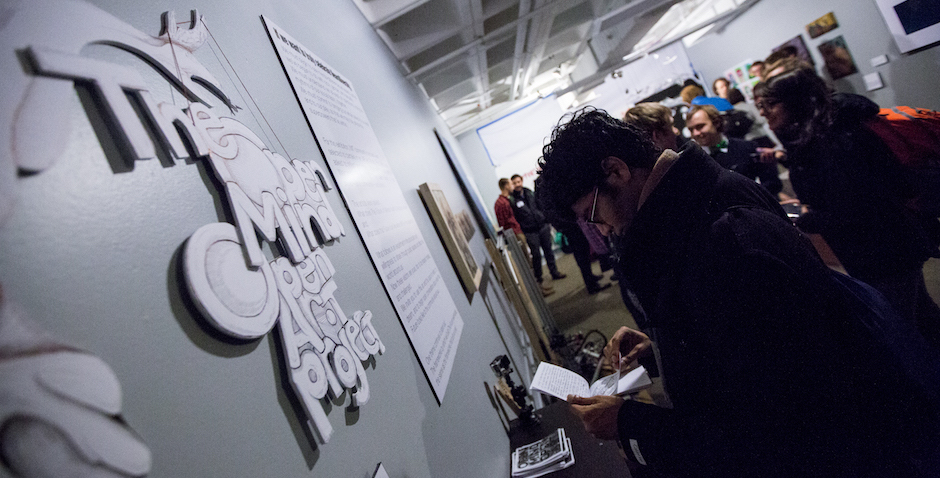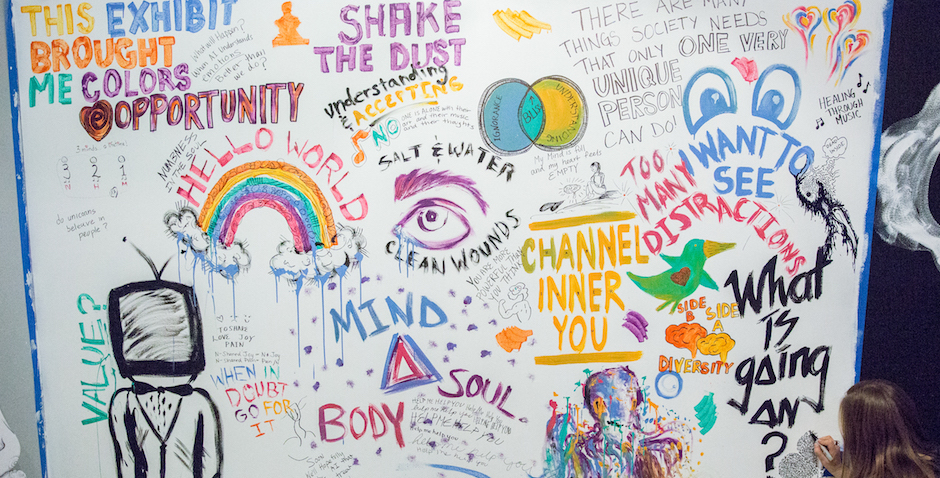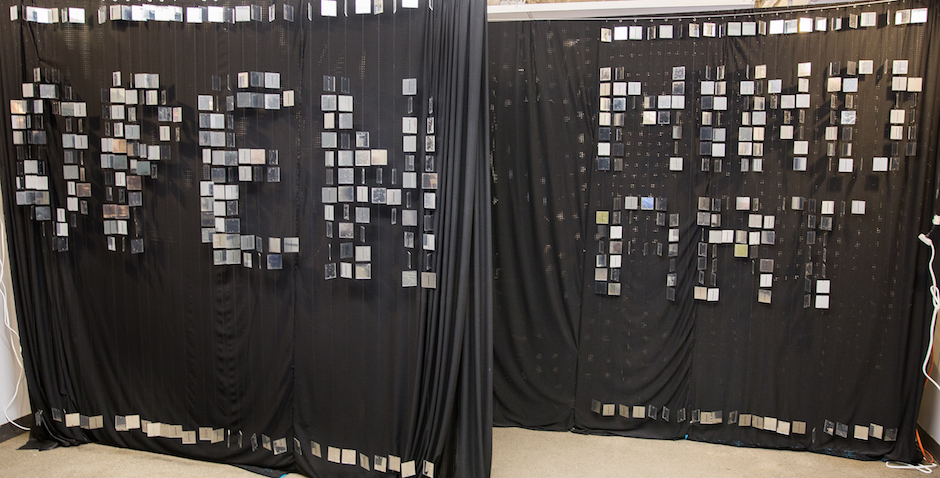Technical Director of the Open Mind::Open Art Mental Health Awareness Gallery
We made the MIT News!
I was honored to be asked to be the technical director for MIT's first art gallery celebrating neurodiversity, sponsored by the MindHandHeart Initiative at MIT. The gallery asked 10 artists and its participants to envision "What does The Future of Mental Health & Wellness look like? and, What does this Future look like if MIT is in the leadership?" Of course, with a probe like that, I couldn't say no.
I also need to give a special thanks to our makers, who each had a specialty in art or fabrication, and were not only great sounding boards for ideas, but also got down and dirty to make the gallery happen.


If you have never been part of the creation of an Art Gallery, I must tell you that so much goes on behind the scenes that people do not know about. If you don't believe, here is just a snippet of the 3 months. The gif below is probably the longest gif you will ever see (about 4 minutes), but it shows the progression of transforming a room into a gallery space.
Finally, as documentation of personal growth, here is a small summary of what I as technical director did to get this event off the ground.
Documentation
A big part of a two week art gallery, preceeded by a month of making, is documentation. Here are two more gifs captured from the raspberry pi cameras of the opening night and the setup. The gifs, since there were sooo many pictures, were made using Matlab. The gifs below show guest in the art space during the opening night. In one of the gifs, you can even see the progression of the mural that was painted in the back wall.
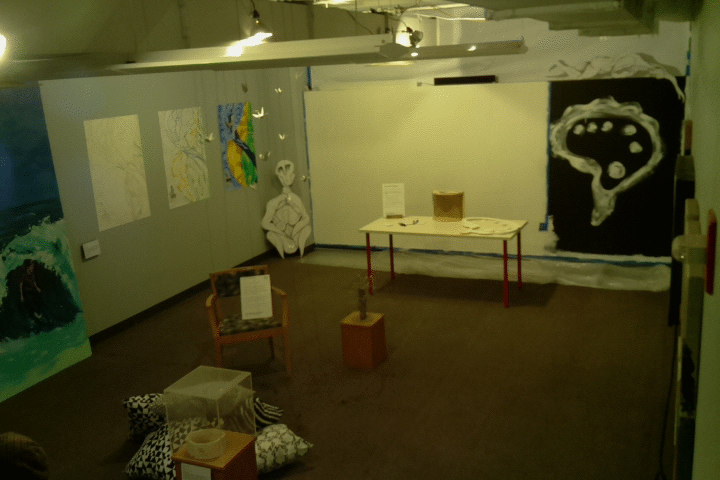

Gallery Curtain
The gallery curtain was made to separate the gallery from the entrance of the room. Unfortunately, the MIT Federal Credit Unit was under construction during the gallery, so their employees had temporary desks at the entrance, not the best entrance for an art gallery. Instead two black, offset curtains were placed to separate the two events in the large room. While inside the gallery, you couldn't look outside, really transforming the participants into a different world.
We were told to make as minimal holes as possible into the walls. The solution was pretty ingenious! We mounted two 6 foot 2x4s horizontally on opposite walls. Using eye hooks, turnbuckles, and 1/4 inch steel wire, we crimped four total lines across the walls in 2 pairs. Two of the lines held up the curtains while the other two held up acrylic squares that spelled out "Open Mind Art." The acrylic squares were covered with a reflectiv nickel film, and laser cut to their size and added holes for stringing string through them.
We used inkscape to design the letters, and then used math to figure out how many acrylic sheets we needed. NOTE: Acrylic sheets are pretty expensive! I ended up driving to New Hampshire for some 4x8 feet sheets I found on craigslist =). Stringing the letters took hours, but the end effect was beautiful!
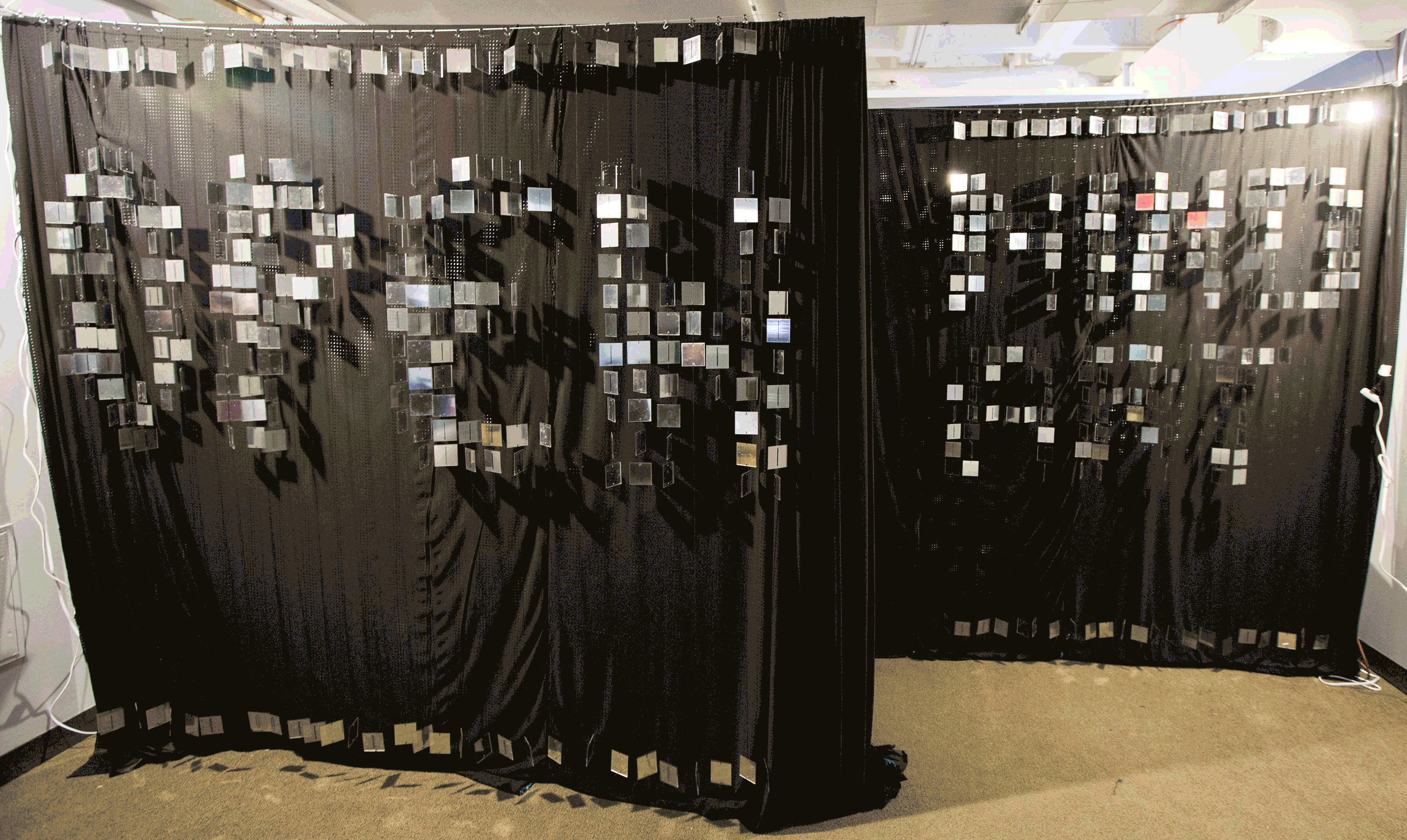
Designing The Logo
The logo I created for the event was pretty simple. We made it early on in the event, and since I wasn't sure where we were going to place it, simplicity was key. We also had ideas of cutting them our of vinyl for stickers, and painting them across the space. The final logo was a 2d brain with a painter's canvas in the center through negative space. I picked a light blue color, but depending on where we were placing it, I changed the color (black for opening night stands, white for the website, etc). The logo was also made so that even if people printed our flyers in black and white, they could still make out our logo.


The logo was so successful that I ended up making a camera prop for the opening night out of wood. Painted white to stand out against the black backdrops, the prop was passed around and our photographer caught some beautiful images. The logo prop was made using a jig-saw, and printing out the logo out of 9 sheets of paper. A thin metal rod was used to hold up the circles in place.
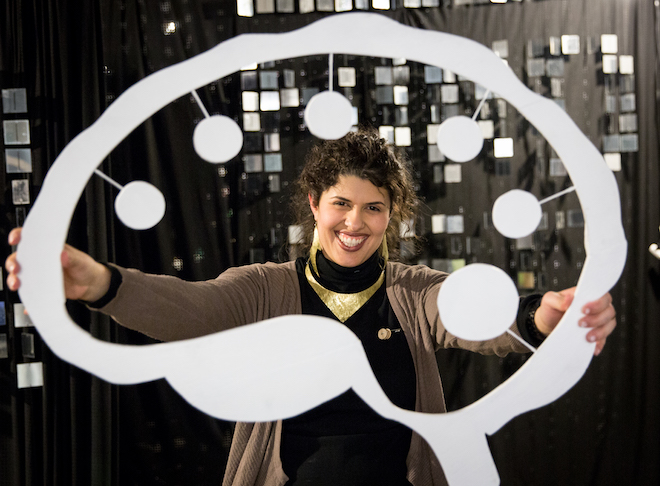
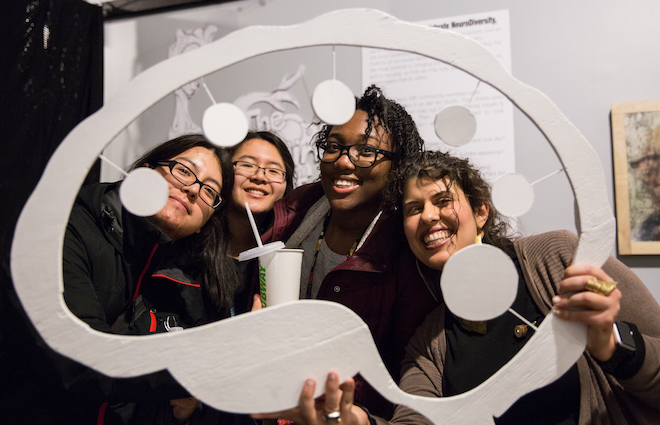
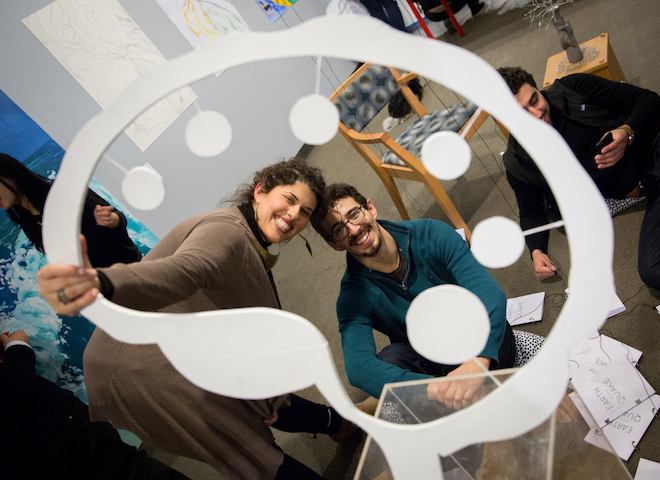
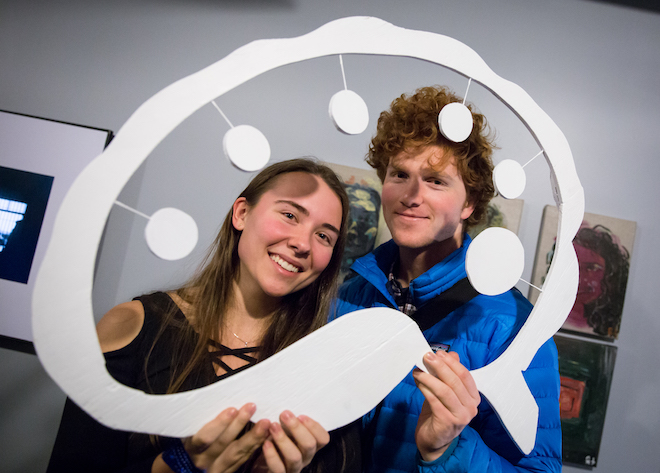
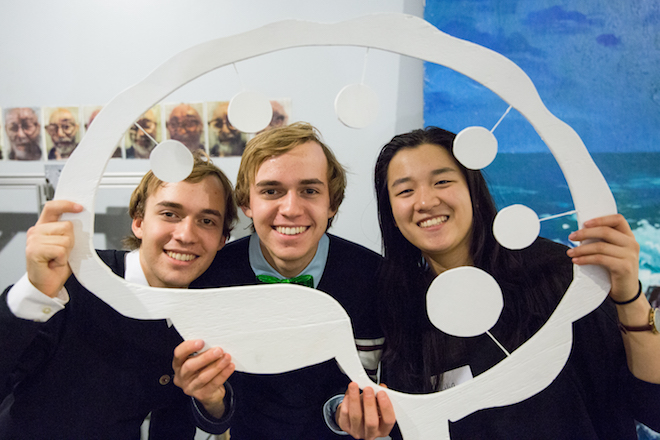
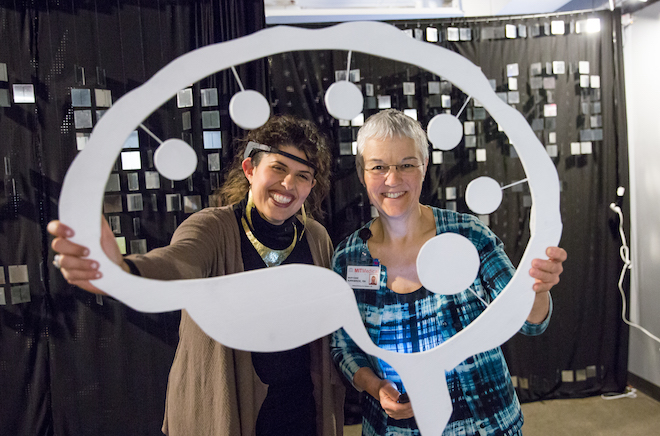
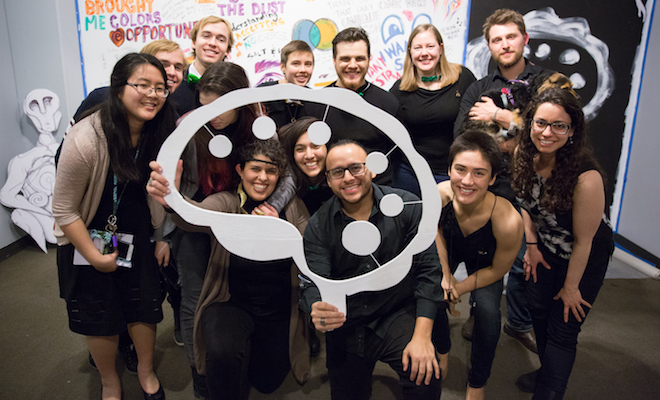
Website
Like any proper event nowadays, a website is key to get your message across. Since I was not in charge of the content, we used a squarespace site so our Creative Director and Social Media Manager could update the site easily.
The hard part was that they wanted the url to not change when loading the page. I had originally redirected an existing website (theartofy.com) towards the squarespace site, but instead masked the directory. Turns out, squarespace doesn't let you mask directories, just subdomains. The Hack was to create URL mapping inside squarespace that pointed to empty directories, who, when the redirect error code of 301 appeared, displayed the squarespace site of theartofy.com. Long story short, the squarespace site is not visible at theartofy.com, and the site is editable through the squarespace interface.
Secret Control of Elements in the Gallery
When you have an art gallery, you don't want to see a lot of tech hanging around in the space. Once of the biggest challenges for me was to have control of the gallery music, lights, and raspberry pi cameras from a central location.
The solution was to hide a T420 lenovo laptop running Ubuntu inside an art piece that was an interactive desk. The laptop played the spotify playlist on loop and connected via bluetooth dongle to the speaker on the other side of the room. The lights were arraged for each piece, and the wires for all 14 lights were hidden behind ventilation tubes on the ceiling. The two raspberry pi cameras were located on opposite sides of the room, and the images were send to the laptop in case the cameras were brought down/unplugged.
I was able to ssh into the raspberry pis using my personal laptop, and used tmux to start timelapse sessions. I was able to remote into the linux laptop to control music and lights for all the nightly events.

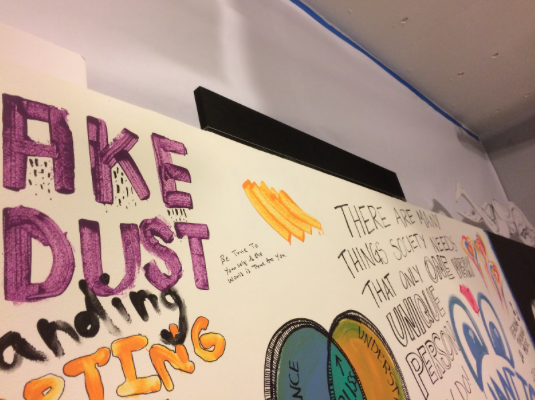
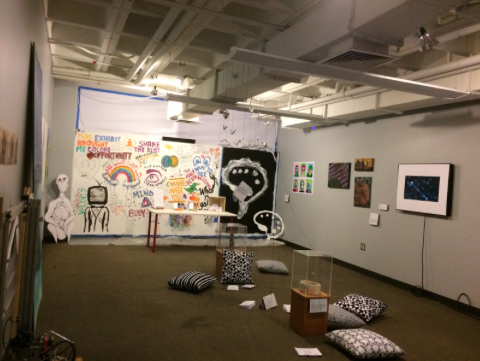
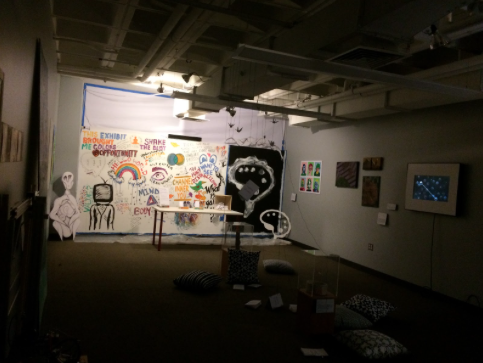
Tech Support for Artists
Part of my job was to also provide tech support for the artists during their creation of their pieces. The biggest support was (1) building a frame to mount a monitor to display images a photographer had taken, (2) finding a way to protect and house two pieces in the center of the gallery, and (3) displaying short stories in a physical way. The short stories were eventually tied to strings hanging from the ceiling, over a circle of pillows made by one of the makers to create an ambience for participants to sit in while they read.
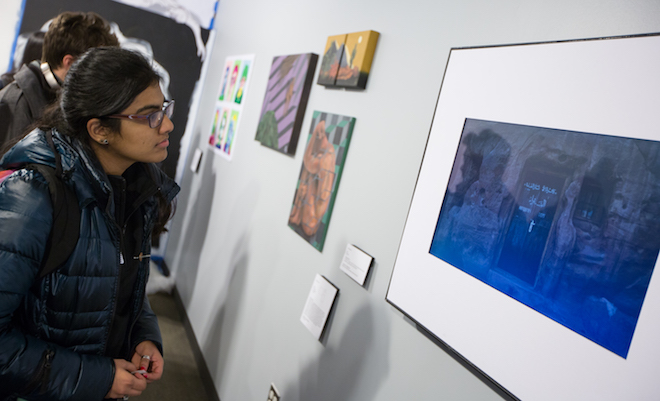
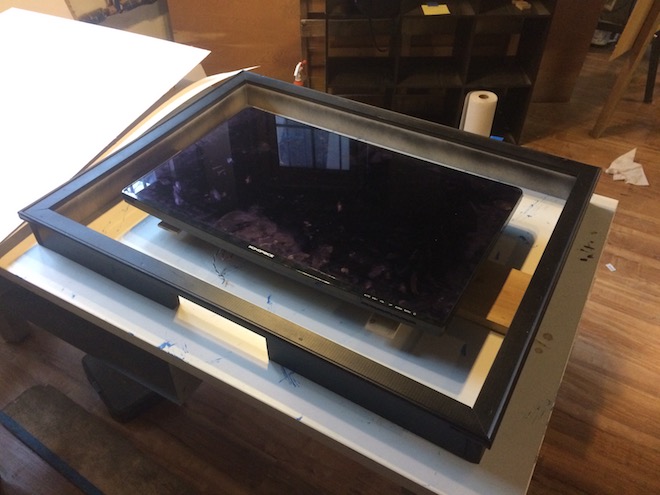
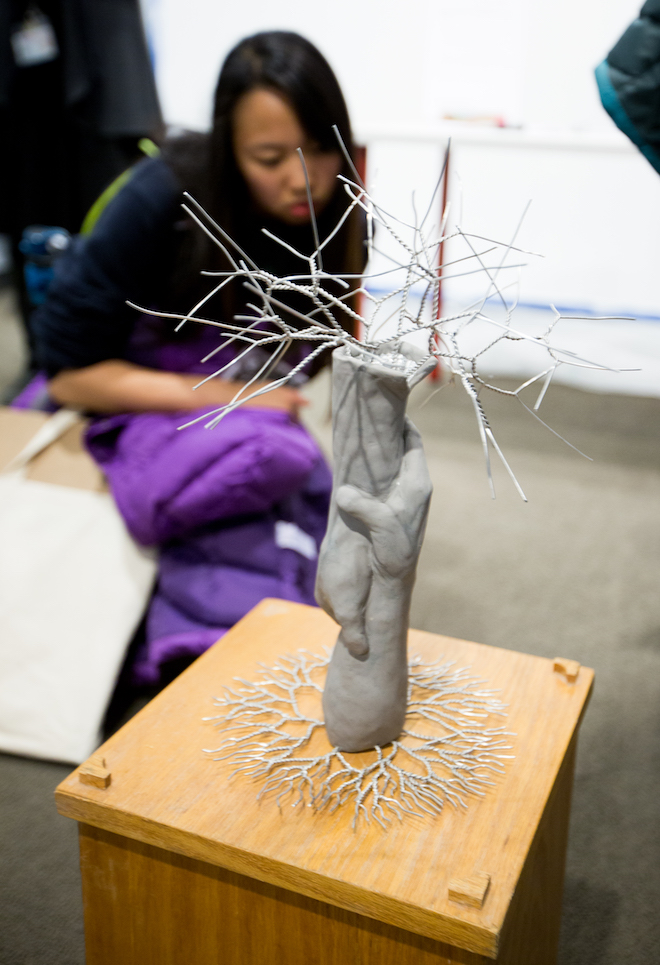
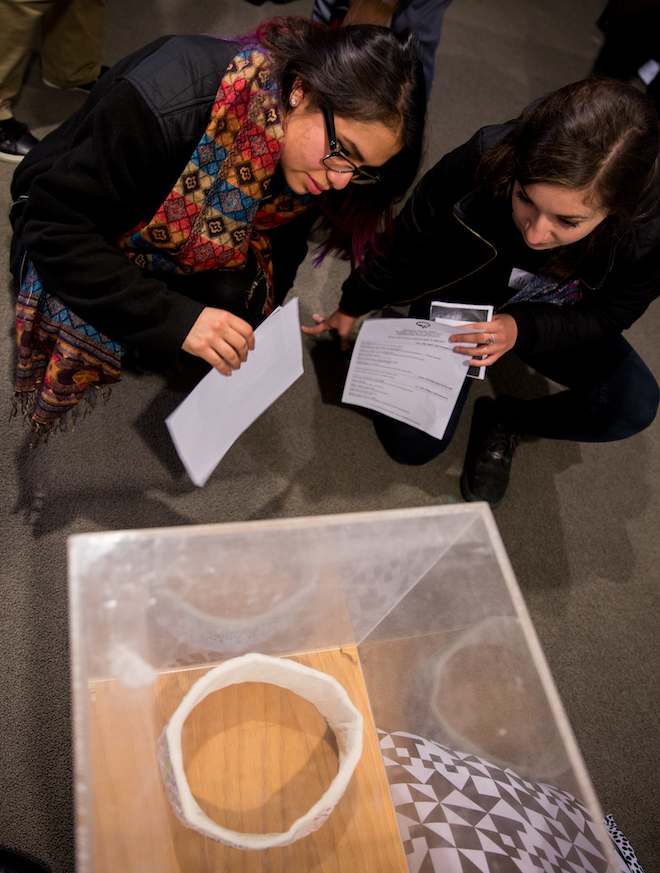
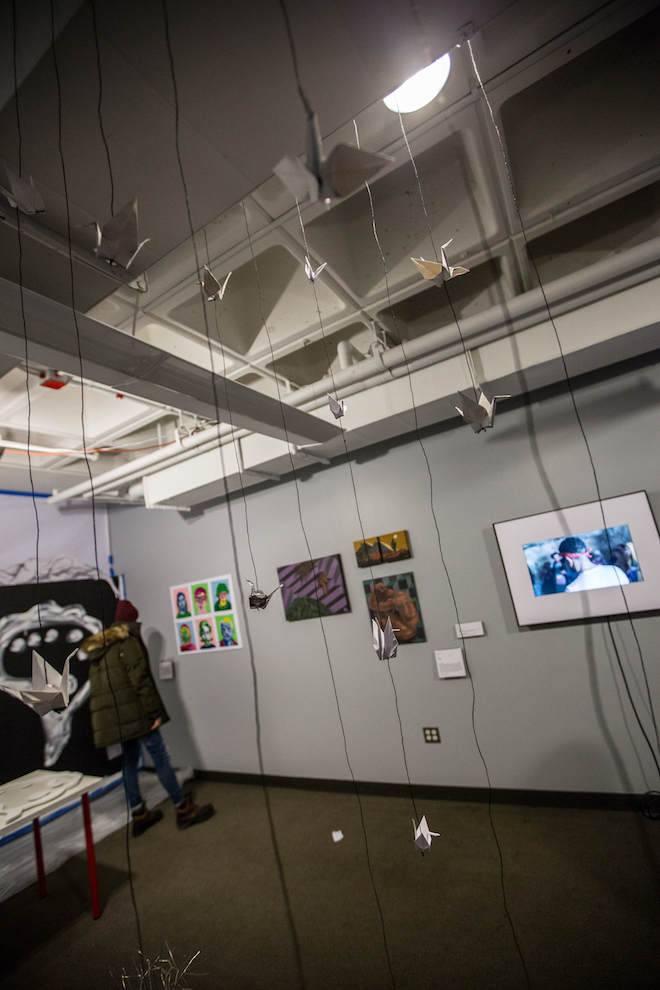
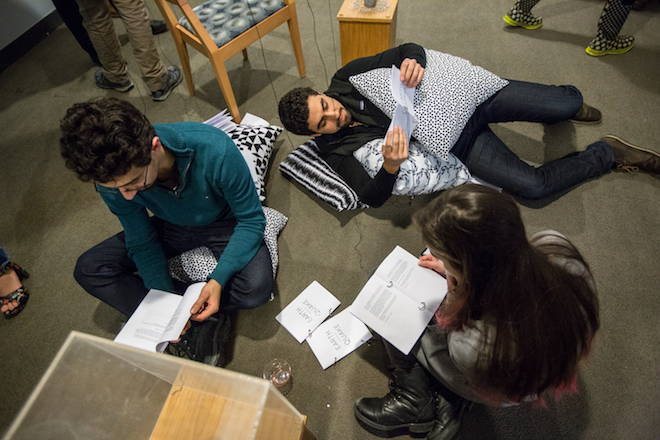
Sign Stands
To stay within the grass roots movements of what started this gallery, I was tasked with creating mounts for signs during the opening night. The signs were plotted on large pieces of paper, spray adhesived to black mat boards, and cut to size. The large signs (about 3x4 feet) were held up on easels. The small signs (about 12x20 inches) were held up on small stands I made using 2x4s.
I found an old piece of 2x4 on MIT's reuse to keep with the vintage appeal. I used a chop saw to cut out 20 8 inch pieces. I then used a table saw, angled the blade, to cut thing slits into the pieces. Finally, used a drill press to cut holes. The slit was sized for the mat board to press fit the signs in place. The holes in the back held sharpies and toys so visitors could draw. The stands were splashed with paint, from the same color pallet used on the mural.
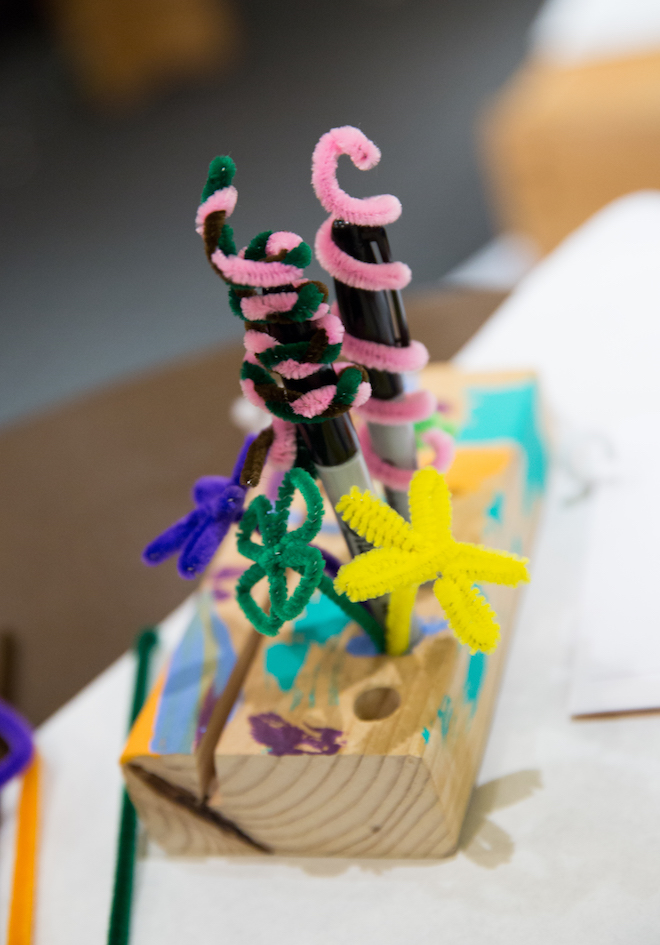
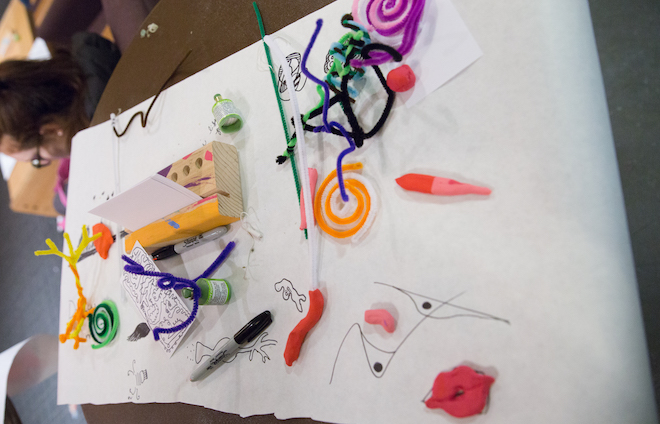
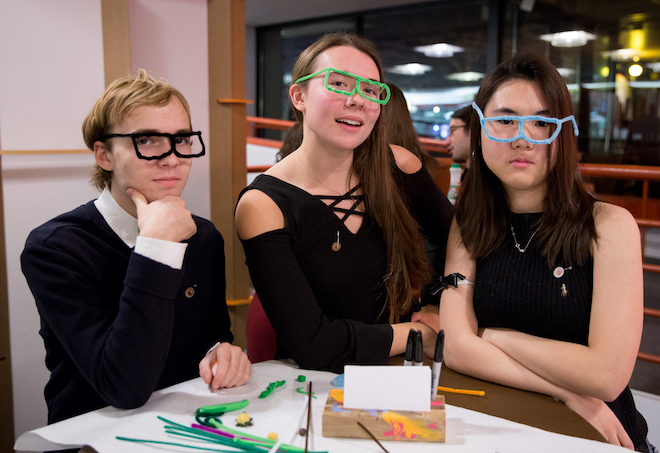
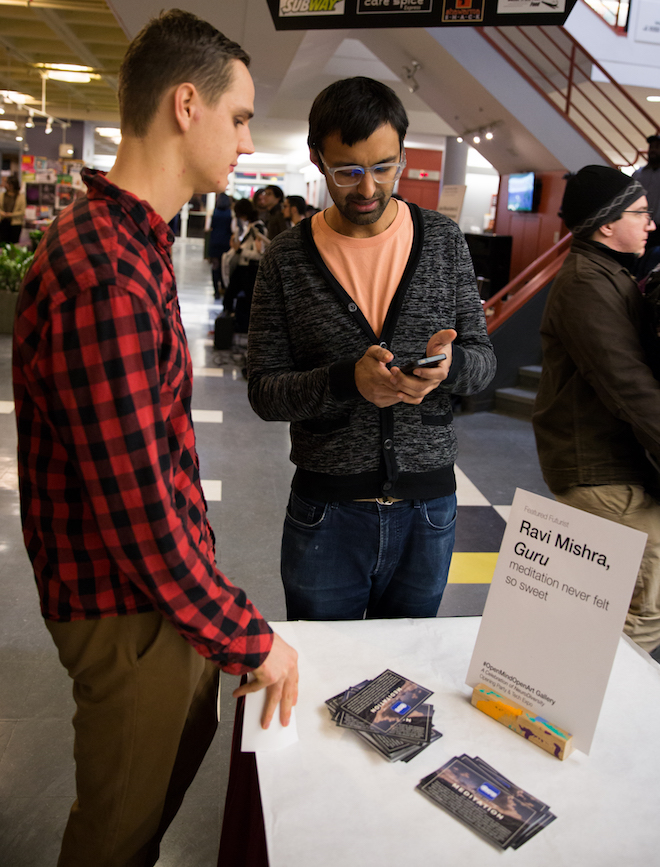
Tech Support for Luminaries
Luminaries were invited artists, engineers, and hackers from Cambridge for the opening night. One of the luminaries required a dark room to display dresses that projected images on them. Thanks to Explo, Jessica was able to get large cardboard pieces and wooden blocks to create a room. The blocks were designed so the cardboard could be press fit in place. Others needed power, monitors, and boards to power and display their tech.
